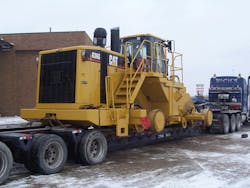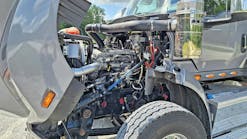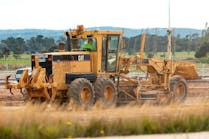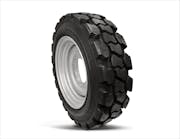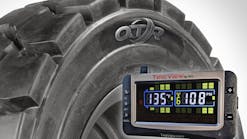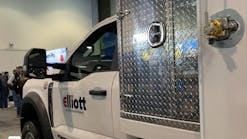John Meese, CEM, is senior director of heavy equipment for Waste Management, and its rebuild program has performed more than 600 bare-frame rebuilds since 2012.
“From an economic standpoint, performing a full machine rebuild on an asset makes all the sense in the world,” Meese says. “Experience tells us that we can perform that style rebuild at 50 to 60 percent of the cost of purchasing a new machine.
“The first thing to know when you’re weighing the economic pros and cons of rebuilding is to use the same evaluation method for all of your fleet’s individual vehicles,” Meese says. “Inserting emotions or wishful thinking when considering the rebuild question will almost always end up costing you money and add to your stress levels.”
Cost per hour life to date (LTD) is the gold standard when it comes to analyzing equipment cost, says Mike Vorster. Use this methodology for using LTD hourly owning and operating costs to calculate the sweet spot.
Waste Management makes rebuilding its wheel loaders a priority part of their overall maintenance regime. Waste Management’s fleet rebuild program starts with the expectation that each new machine will have several lives, says John Meese.
Meese has organized the Waste Management fleet into several tiers. The first tier contains brand new machines that are immediately assigned a preventive maintenance schedule to en-sure maintenance and repair records are monitored and so that the unit produces the most hours with the least unexpected repairs.
Its mid-aged machines are put into the rebuild queue when they reach a predetermined hour count or when maintenance data indicates the time is right. Older vehicles that have been re-built previously but have reached the point when rebuilding them is no longer a viable option are rolled out of the fleet.
“From an operating cost viewpoint, the rebuild can be depreciated over time, lowering the fixed cost per hour of operations substantially,” Meese says.
Be honest with expectations, he suggests: Will rebuilding the machine restore its original capabilities and serve future applications?
Other questions to consider: Has the unit reached its desired number of hours with only minor repairs? Is it still under warranty? Do service records show its fluid samples are clean and stable? Are the operator safety and comfort systems still functioning well? Can adding new technology to the rebuild package allow that older machine to meet modern expectations?
Determining the timing for a rebuild is a multifaceted consideration, which should include the costs of renting temporary equipment.
“Most fleet managers subscribe to the theory that there is a ‘right time’ to either rebuild or trade-in a machine,” says Dan Stecklein, product manager/service marketing for John Deere. “Looking at it from the perspective of ownership costs, the longer you keep a machine in service the better, because by doing so, it divides that initial purchase price by a greater number of hours and lowers the operating cost per hour.”
